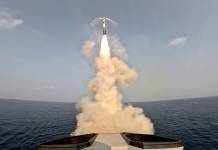The mega trade deal RCEP (Regional Comprehensive Economic Partnership) will continue in 2019. This was stated by Indian Trade and Commerce Minister Suresh Prabhu. Regional Comprehensive Economic Partnership comprises 10 ASEAN members (Brunei, Cambodia, Indonesia, Malaysia, Myanmar, Singapore, Thailand, the Philippines, Laos and Vietnam) and their six FTA partners – India, China, Japan, South Korea, Australia and New Zealand.
- Is China Paying Baloch Militants in Pakistan for Not Attacking the CPEC?
- Russia Warns Neighbours Finland, Sweden Against Joining NATO
Negotiations for the mega-trade deal RCEP will continue in 2019 as more rounds of talks are required to solve issues pertaining to goods and services, Commerce and Industry Minister Suresh Prabhu said Tuesday.
Regional Comprehensive Economic Partnership
Trade ministers of 16 members of Regional Comprehensive Economic Partnership met last week in Singapore to review the progress of negotiations. The mega trade pact aims to cover goods, services, investments, economic and technical cooperation, competition and intellectual property rights.
Prabhu said that the Singapore meeting focused on three important issues, including establishing linkage of services to goods negotiations as the agreement is a comprehensive one and not focus only on goods. The services sector is the prime area for India as the segment accounts for about 55 per cent of the country’s GDP.
He said that it is an economic partnership agreement and services must be an integral part of it. “The RCEP negotiations will not end in 2018. It has been agreed at the level of leaders…it will go in 2019 as well and we will have the opportunity to work on all the issues,” the minister told reporters here.
He also said that there are 16 countries in the group and in this India do not have free trade agreements with Australia, New Zealand and China. With rest of the members, including Japan and ASEAN countries, India already has a trade agreement.
India has stated that “we cannot negotiate through RCEP route with these three countries and we have to separately negotiate with them,” he said adding “India’s insistence have been accepted and now we will be negotiating with China, Australia and New Zealand separately along with RCEP negotiations”.
Prabhu said that the leaders in Singapore have also accepted the demand of India for having 20 years implementation period of the agreement. The commerce ministry will also hold discussions with stakeholders on the inclusion of products. RCEP bloc comprises 10 ASEAN members (Brunei, Cambodia, Indonesia, Malaysia, Myanmar, Singapore, Thailand, the Philippines, Laos and Vietnam) and their six FTA partners – India, China, Japan, South Korea, Australia and New Zealand.
- India Anxious, as Russia, China, Pakistan May Build Strategic Alliance?
- Pakistan No Longer The “Darling of US”; Seeks Revised Foreign Relations
The discussions, which were launched in Phnom Penh in November 2012 have dragged on as the member countries want an agreement over the removal of customs duties on the maximum number of products traded between them. However, countries like India have certain reservations on this as the grouping includes China, with which New Delhi has a huge trade deficiency.
Indian industry and exporters are uncertain about the presence of China in the grouping. They have stated that lowering or eliminating duties for China may flood Indian markets with Chinese goods. Meanwhile, in a statement, the ministry said that trade ministers in Singapore tasked the negotiators to go into the details of ASEAN’s “non-paper on trade in goods market access negotiations”.
In the meeting, the Indian commerce minister reiterated the need for providing adequate flexibilities on various elements of the Non-Paper, such as exclusion, reduction, staging and deviations. “Accordingly, it was agreed that member countries will intensify bilateral pairing process on requests and offers … these elements and determine the ambition level of each country to the mutual satisfaction,” it said.
The ministers directed that the negotiations on all these matters will be raised during the 24th RCEP Auckland Round from 17-24th October. India is looking for a balanced trade agreement as it would cover 40 per cent of the global GDP and over 42 per cent of the world’s population.
More News at EurAsian Times
- Indian Military Base in Sabang can Strangle China at the Strait of Malacca
- Major Spat Between India and Pakistan Over Free Balochistan Office In Delhi
- Saudi Arabia Halts All Oil Shipments After Yemen Missile Attack
- Saudi Crown Prince Unravels Deep Secrets Behind Wahhabism and the Yemen War





